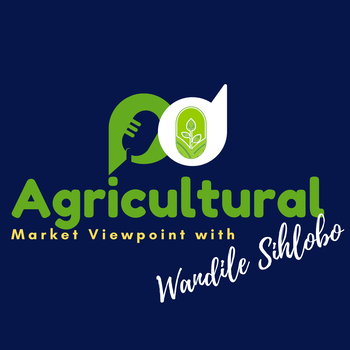
What underpins food prices in South Africa
Loading player...
The South African government voiced concerns about the higher food prices and instructed the cabinet's economic cluster to implement a food security plan to cushion consumers. We have yet to see the government's strategy and approach.
But it is worth highlighting that South Africa's consumer food price inflation has started to decelerate from the high levels of 14,4% we saw in March 2023. In July 2023, consumer food inflation was recorded at 10,0%, from 11,1% in the previous month. The product prices underpinning this deceleration in recent months are primarily bread and cereals; meat; fish; and oils and fats, which are crucial for low-income households.
Notably, as the cabinet's economic cluster prepares to start its work, it is vital to have a common understanding of the key drivers of food prices in recent years and an appreciation that this is a global challenge, not unique to South Africa. For example, two primary drivers of global food prices existed before the covid-19 pandemic.
First, the drought in South America in the 2019/20 season reduced the harvest notably, primarily in Brazil and Argentina. These countries collectively account for 14% and 50% of global maize and soybean production. The drought has spread for roughly three seasons since 2019/20, further exacerbating the grain price increases from 2020 to the end of 2022.
Secondly, China's continuous imports of grains and oilseed as the country was rebuilding its pork industry after a devastating African Swine Fever also added to the surge in demand at a period when global stocks were tight. China's growing demand had a consequential impact on global grain prices because of its share size of imports — for example, the country imports about 60% of globally traded soybeans.
As covid-19 spread in early 2020, several major grain producers, such as India, Kazakhstan and Vietnam, worsened global price increases by temporarily banning exports. As this unfolded, shipping costs soared, increasing global grain prices. In sum, a combination of trade policy actions by other countries, logistics and weather conditions placed upward pressure on food prices.
These all-important fundamentals challenge food supplies, further worsened by the Russia-Ukraine war. Russia and Ukraine are substantial players in the grains and oilseeds market.
As a small, open economy, South Africa, interlinked with the world, was not insulated from these agricultural and food price shocks. Admittedly, South Africa was in a reasonably better place, with abundant supplies, as the La Niña weather event brought good rains across the country and supported agricultural activity. Still, the prices did not reflect the increased domestic supplies as the global shocks mainly underpinned them.
Over the period of higher global commodity prices, the food producers and processors had to deal with higher agricultural commodity prices and process such commodities further to produce the food products available at the retail level. The activities between the producer and retailer do not happen without costs, and time lag. The food value chain first depends on expansive logistical systems and networks, while processing involves labour, energy, packaging and finance costs. Once the food is processed, it must be distributed to retail outlets, bearing these costs. On top of that, we can add the dramatic costs of load-shedding and crime.
If food processors and retailers accounted for all these cost increases across the value chain, consumers would face a much sharper price increase. But this was not the case in South Africa. Food prices increased at a moderate pace (compared to other countries), averaging 9,5% in 2022, compared with 6,5% year on year in 2021. Countries like the US, Brazil, and the EU saw higher consumer food price inflation rates. This suggests that food processors and retailers if anything, absorbed some costs.
Notably, while the consumer food price inflation averaged 9,5% in 2022, the produc
But it is worth highlighting that South Africa's consumer food price inflation has started to decelerate from the high levels of 14,4% we saw in March 2023. In July 2023, consumer food inflation was recorded at 10,0%, from 11,1% in the previous month. The product prices underpinning this deceleration in recent months are primarily bread and cereals; meat; fish; and oils and fats, which are crucial for low-income households.
Notably, as the cabinet's economic cluster prepares to start its work, it is vital to have a common understanding of the key drivers of food prices in recent years and an appreciation that this is a global challenge, not unique to South Africa. For example, two primary drivers of global food prices existed before the covid-19 pandemic.
First, the drought in South America in the 2019/20 season reduced the harvest notably, primarily in Brazil and Argentina. These countries collectively account for 14% and 50% of global maize and soybean production. The drought has spread for roughly three seasons since 2019/20, further exacerbating the grain price increases from 2020 to the end of 2022.
Secondly, China's continuous imports of grains and oilseed as the country was rebuilding its pork industry after a devastating African Swine Fever also added to the surge in demand at a period when global stocks were tight. China's growing demand had a consequential impact on global grain prices because of its share size of imports — for example, the country imports about 60% of globally traded soybeans.
As covid-19 spread in early 2020, several major grain producers, such as India, Kazakhstan and Vietnam, worsened global price increases by temporarily banning exports. As this unfolded, shipping costs soared, increasing global grain prices. In sum, a combination of trade policy actions by other countries, logistics and weather conditions placed upward pressure on food prices.
These all-important fundamentals challenge food supplies, further worsened by the Russia-Ukraine war. Russia and Ukraine are substantial players in the grains and oilseeds market.
As a small, open economy, South Africa, interlinked with the world, was not insulated from these agricultural and food price shocks. Admittedly, South Africa was in a reasonably better place, with abundant supplies, as the La Niña weather event brought good rains across the country and supported agricultural activity. Still, the prices did not reflect the increased domestic supplies as the global shocks mainly underpinned them.
Over the period of higher global commodity prices, the food producers and processors had to deal with higher agricultural commodity prices and process such commodities further to produce the food products available at the retail level. The activities between the producer and retailer do not happen without costs, and time lag. The food value chain first depends on expansive logistical systems and networks, while processing involves labour, energy, packaging and finance costs. Once the food is processed, it must be distributed to retail outlets, bearing these costs. On top of that, we can add the dramatic costs of load-shedding and crime.
If food processors and retailers accounted for all these cost increases across the value chain, consumers would face a much sharper price increase. But this was not the case in South Africa. Food prices increased at a moderate pace (compared to other countries), averaging 9,5% in 2022, compared with 6,5% year on year in 2021. Countries like the US, Brazil, and the EU saw higher consumer food price inflation rates. This suggests that food processors and retailers if anything, absorbed some costs.
Notably, while the consumer food price inflation averaged 9,5% in 2022, the produc

